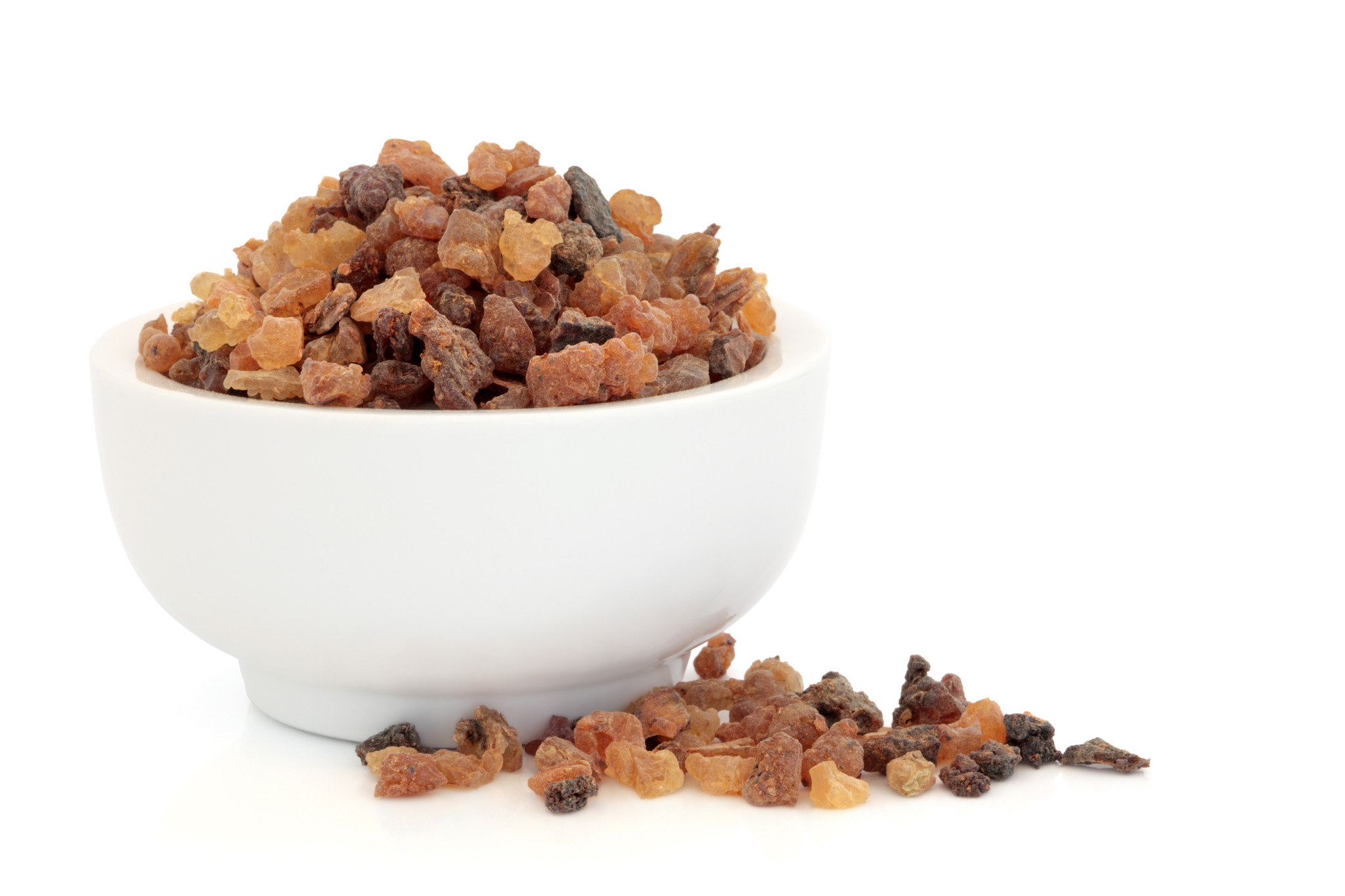Myrrh Essential Oil
We’ve all heard of the Biblical gift of frankincense and myrrh, but, have you ever wondered what they were? Both are resins derived from plants. Myrrh is the dried gum-resin of any of several species of Commiphora, a small and thorny tree that likely originated in the highlands of Yemen. The plant has spread throughout Saudia Arabia, the Red Sea coast and into coastal African countries including Somalia. Farmers and herbalists gather the resin by slicing open the bark. The sap inside hardens into tear-shaped deposits. This is either used dry or steamed to yield the essential oil.
Since antiquity, myrrh has been used for ceremonial and medicinal purposes. The resin has been traded for at least 5,000 years. During the first century, Romans imported 550 tons of myrrh every year. The Egyptians imported it by the boatload, using it for perfumes, incense, insect repellant and salves.
Spiritually, the resin was believed to have the effect of clearing the air and regenerating the spirit. The resin can be burned as incense, producing a rich and pungent smoke with a scent similar to pine resin. Modern users still burn myrrh as a calming incense.
In many parts of the world, myrrh resin and extract are still used to treat a wide range of maladies. Historically, it was believed to be a remedy for all types of ills, from toothache to leprosy. In modern times, some people use it to treat mouth issues that include gingivitis, mouth ulcers and inflammatory periodontal diseases. It is also used to prevent stomach distress and gas. Still other people use it as a treatment for candida (yeast) infections.
Many of myrrh’s traditional medicinal uses are now supported by science. In one study performed at the King Khalid Wildlife Research Center, preparations of myrrh were found to be an effective antimicrobial when used against e. coli bacteria; P aerguinosa, a bacteria sometimes found in hospitals; and s. albus, the bacteria behind staph infections. It also was effective against Candida albicans, the fungus that can cause oral thrush in babies and vaginal yeast infections in women.
Myrrh’s power as an antibacterial and antifungal were reinforced in a recent study at the University of Florence in Italy. Researchers there also found that myrrh was effective as a topical anesthetic.
Marrying traditional wisdom with scientific study, we use this and other botanicals in many of our products. Myrrh essential oil lends its deep, earthy scent to our perfume oil, perfume balm, room sprays and soaps.
Buy Organic Myrrh Essential Oil
Organic myrrh oil is a base note steam distilled from the gum of Commiphora myrrha. Myrrh essential oil is a soft and earthy fixative with a warm, spicy aroma. Myrrh has been prevalent throughout history. It was used in the mummification process by the Egyptians. It has been used in religious rituals all over the world, and it is utilized in Chinese and Ayurvedic medicines. This ancient scent blends well with frankincense, rose, tea tree, lemon, or neroli.
Blends Well With
Bergamot, chamomile, clove, cypress, eucalyptus lemon, frankincense, geranium, grapefruit, jasmine, juniper, lavender, lemon, neroli, palmarosa, patchouli, pine, rose, rosemary, sandalwood, tea tree, vetiver, and ylang ylang
Packaging
5 mL, 1/2 oz., and 1 oz. essential oils are packaged in amber glass bottles with drop reducers for easy application. Larger sizes are packaged in amber screw cap bottles and do not come with reducers or droppers.
Precautions
This oil may be fetotoxic due to β-elemene and furanodiene content. Avoid while pregnant. Never use essential oils undiluted, in eyes or mucus membranes. Do not take internally unless working with a qualified and expert practitioner. Keep away from children.
Before using topically, perform a small patch test on your inner forearm or back by applying a small quantity of diluted essential oil and apply a bandage. Wash the area if you experience any irritation. If no irritation occurs after 48 hours it is safe to use on your skin.


